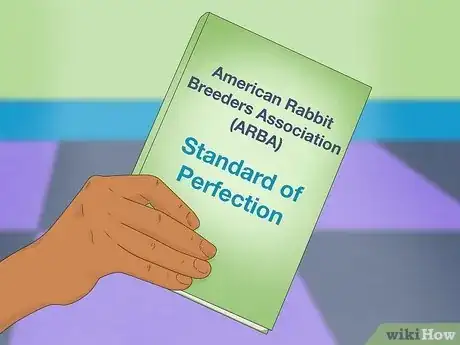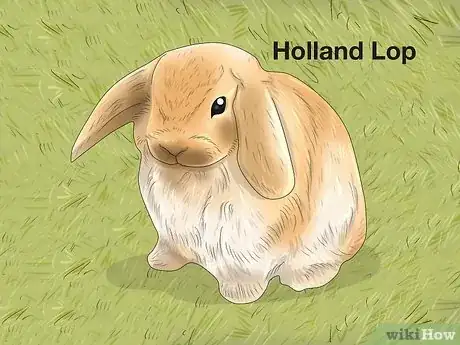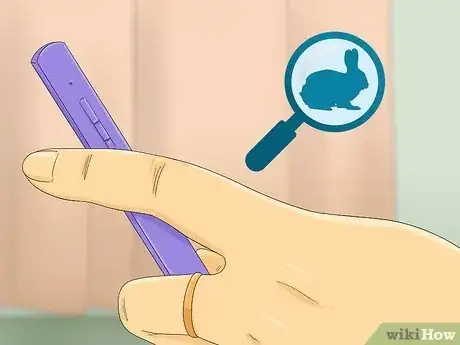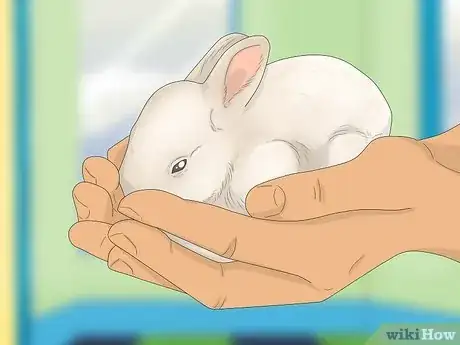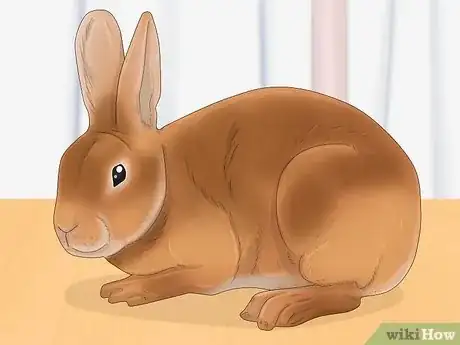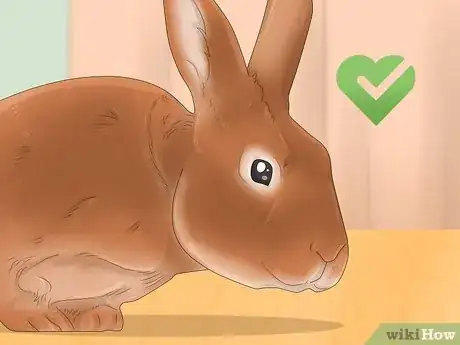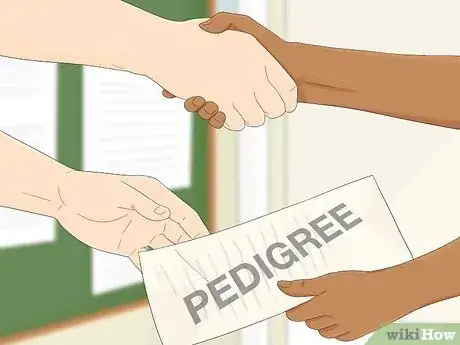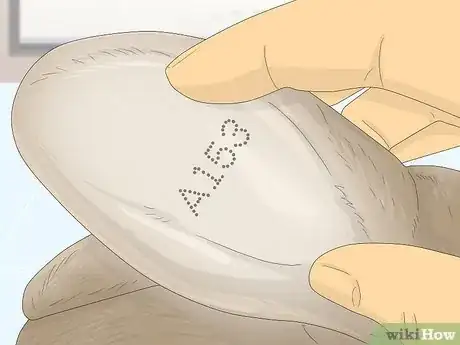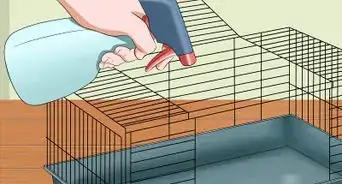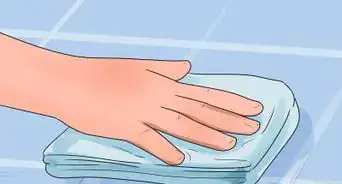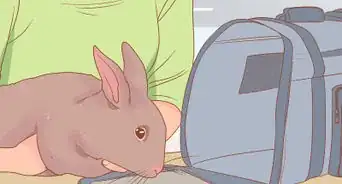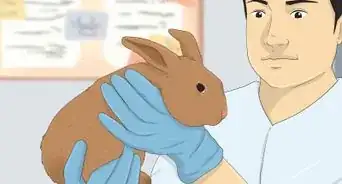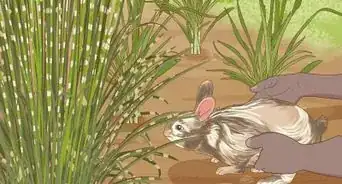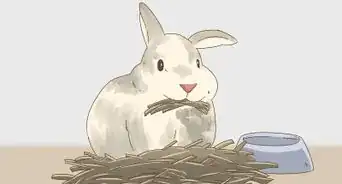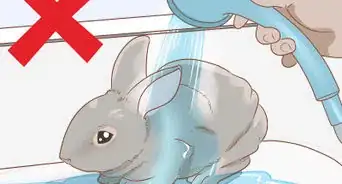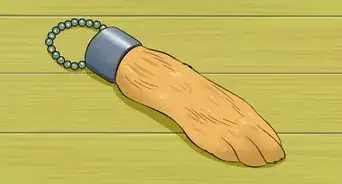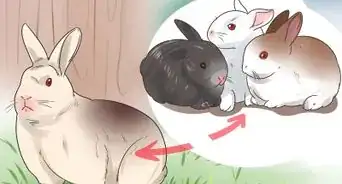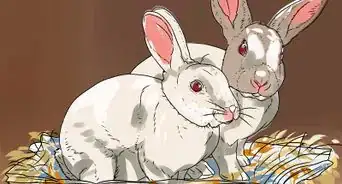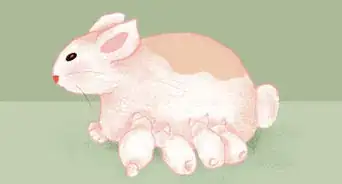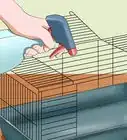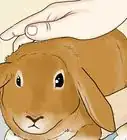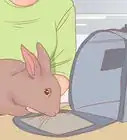This article was co-authored by Ryan Corrigan, LVT, VTS-EVN. Ryan Corrigan is a Licensed Veterinary Technician in California. She received her Bachelor of Science in Veterinary Technology from Purdue University in 2010. She is also a Member of the Academy of Equine Veterinary Nursing Technicians since 2011.
This article has been viewed 82,727 times.
Do you want to purchase a rabbit to compete with at shows? There are a variety of things you should consider when making that decision. A show rabbit needs to be healthy, have a good pedigree, and its physical characteristics should conform to the standards of its breed. However, picking the right rabbit doesn't need to be a hard or scary endeavor. With a little thought and some care, it can be a fulfilling and enjoyable process.
Steps
Picking a Type of Rabbit
-
1Buy a breed standard book. In the United States, this is called the American Rabbit Breeders Association (ARBA) Standard of Perfection. This book describes every recognized breed and what it should look like. Having the standards for every recognized breed will allow you to figure out what breeds you like best and what they should look like.[1]
- Having the standard will also help prevent you from getting a rabbit that will not do well on the show tables.
- Breed standard books are typically available on the websites of breed appreciation groups, such as the American Rabbit Breeders Association.
-
2Select the breed best suited for your level of expertise and accommodations. Many of the small-sized breeds are typically easy to handle for beginners. They also use less cage space and eat less food than the bigger breeds, so they are cheaper to care for and are a good choice to start with. Some of the dwarf and smaller-sized breeds with easy temperaments include:
- Dutch
- Mini Rex
- Holland Lop
- Polish
- Lionhead
Advertisement -
3Avoid certain dwarf and full-arch breeds if you are just starting out. Do not get a more challenging breed, such as Netherland Dwarf, Britannia Petite, or any of the running breeds, unless you are experienced at showing rabbits or you are located near a competent breeder who can help you. These rabbits require skills to handle, breed, and pose. Overall, they can simply be more challenging to the beginner despite their smaller size.
- If you really want to show dwarf rabbits, get some skills with small-sized rabbits first. Once you have some experience, you will then be able to care for and show dwarf breeds more successfully.
Finding a Reputable Breeder
-
1Look online for breeders. Find a breeder online by looking at your state’s rabbit club website or the website of a national breed appreciation group. Try to find breeder listings for your area, but if local breeders don't have what you are looking for, be prepared to find transport, or ship the rabbit(s). Do not get a rabbit that will be used for showing or breeding at a pet store, shelter, or rescue.
- If you are looking for a rare breed or variety, you may need to travel, use transport, have it brought to a show, or flown by air. Take this into consideration when contacting breeders.
-
2Contact a potential breeder. Once you have identified breeders in your area, or a breeder that you are willing to travel to meet, then you should contact them. Call them or email them and ask if they have rabbits available for sale. Be prepared to tell them why you want a show rabbit, and what specifically you are looking for in terms of breed, variety, number, sex, age, and what other important characteristics you are looking for. Be specific so that the breeder can best help you. Also include your location.[2]
- A good breeder will have as many questions for you as you have for them. They should be invested in the well-being of their rabbits. This means that they want to place them in the best, most suitable homes possible.
- Invest in the highest quality stock you can afford. Cheap rabbits are not likely to do well on the show table. Don't get a young rabbit (under 3 months old), as this is not likely to be show quality. If you really want a show rabbit, get something at least 5 or 6 months old.
- You may have to wait until the breeder has rabbits available before scheduling a visit, or arranging to meet at a show.
- Don't be surprised if the breeder doesn't want you to inspect their breeding location. Many breeders operate a 'closed rabbitry', meaning they don't want random strangers traipsing into their barn and poking around. People who say they are potential buyers may really be thieves, animal rights activists, or other creeps that the breeder doesn't want nosing around their precious livestock.
- If you are allowed to visit, take note of whether their rabbitry is clean, organized, and well-kept. If it is dirty, smelly, and full of unhealthy rabbits, then do not buy from the breeder.
-
3Ask the breeder about how they raise their rabbits. Ask about how the breeder shows their rabbits, how they condition them, and how they breed them. This is extremely valuable information learned over many years of trial and error. It can save you much time, money, and heartache to buy a rabbit from a person that is skilled at breeding instead of someone who is not experienced.[3]
- A reputable breeder will be able to answer your questions and provide you with resources, which can be helpful if you are just getting started in showing rabbits.
-
4Most breeders will not have you sign a contract. However they may have a sales policy, so ask to see it before you purchase the rabbit. They may have it on their rabbitry website or Facebook if they have one.
Selecting a Specific Rabbit
-
1Assess the rabbits for sale. Narrow down your choices by posing the rabbits, feeling their bodies, and assessing the quality of their conformation, fur, and color. Also take note of whether the rabbit has a good temperament or not. It's difficult to interact with a rabbit with a poor temperament day after day. Do not purchase a young rabbit as a show animal, as the breeder has no way of knowing whether the animal will develop well or not at this young age. Anything sold at 8 weeks old is likely to be pet quality.[4]
- Some questions to ask yourself when assessing the rabbits for sale include: Is it friendly? Does it come and greet you or does it run and hide? Does it have a good weight and glossy, healthy coat? Will it allow you to flip it over? But most importantly, does this rabbit fit the breed standard, and is it an excellent example of how its breed is meant to look?
- Avoid buying rabbits listed as "4-H quality", as these rabbits are typically pet quality rabbits that the breeder is trying to get a higher price for.
-
2Check the rabbit's coat. Pet the rabbit and inspect its fur. In many breeds, the fur should snap back into position when you stroke it backwards (tail to head). The fur should also be soft, free of knots or mats, and there should be no bald spots on the rabbit. Each breed has different fur requirements called for in the breed standard, so be knowledgeable about what your breed's fur should look and feel like before assessing a rabbit's fur.
- Check the Standard of Perfection for rules on fur for the breed you are getting before you pick a rabbit. The rules could include coat length, color, and pattern requirements. Check that the undercolor is correct, and that all markings are the right size, shape, and color.
-
3Look at the rabbit's the face. A good show rabbit should have eyes that are clean, free of discharge, and bright. The color of the eyes should also conform to the standard for the breed. The nose should not be runny, and its top teeth should overlap its bottom teeth. Also, its ears should be parasite and wax free, so look inside them while assessing a potential rabbit to bring home.[5]
- Any sign of illness should be enough to eliminate a potential rabbit. You want to bring home a rabbit the is in perfect health, so a runny nose or gooey eyes should not be tolerated.
-
4Assess the rabbit's body. Its back should be strong and firm, not bony, lumpy or crooked. The rabbit’s body should be firm, not soft and flabby. The legs should be straight. Every rabbit should have five toes on the front feet and four on the back feet and all the toenails should be present.[6]
- Some rabbits have different shaped backs and may feel skinnier than others, so check the Standard of Perfection (SOP) or ARBA website for the details.
- There should be white toenails on white breeds and varieties and colored toenails on colored breeds or varieties.
- In a very young rabbit, the body might not be very firm, but it should not be flabby.
-
5Assess the rabbit's health. Listen to the rabbit's breathing. The rabbit should have very quiet breathing. It should also have firm, dry stools, so try to inspect its feces as well. Overall, there should be no signs of illness or injury.[7]
- Rabbits do sometimes get urination stains on their feet. This does not mean they're sick.
- It is important not to buy a sick rabbit. It can infect your whole rabbitry and can lead to heartbreak down the road if the rabbit doesn't survive or is in pain due to illness.
-
6Discuss the rabbit's pedigree. Know about the best lines in your breed. Keep in mind that even rabbits with multiple legs (awards) can be poor quality, so it is better to know lines than wins. If everything with a rabbit looks good, ask to see the rabbit’s parents and/or offspring, if possible. Make sure the rabbit you buy has a pedigree.
- Just because you get a rabbit that has show winners in its pedigree, that doesn't automatically mean that your rabbit will be a winner as well. However, it may increase your chances of having a winner.
- You will need to have a pedigree for your rabbit to register it with ARBA, and to breed it. You do not have to have a pedigree to show, but you must to register your rabbit as a Grand Champion if it wins 3 GC legs. Make sure to get a copy when you purchase your rabbit. Do not leave this until later.[8]
-
7Have your rabbit tattooed, if it isn't tattooed already. Most breeders do this themselves. You must have a tattooed number or letter sequence if you are to show in ARBA shows. This gets written on the pedigree so you can identify your rabbits easily.[9]
- At rabbits shows, there may be eighty rabbits of the same breed and color, and you don’t want to get yours swapped up with someone else’s. The tattoos help to keep the rabbits straight.
References
- ↑ http://www.arba.net/breeds.htm
- ↑ http://www.humanesociety.org/animals/rabbits/tips/getting_a_rabbit.html
- ↑ http://www.humanesociety.org/animals/rabbits/tips/getting_a_rabbit.html
- ↑ http://www.humanesociety.org/animals/rabbits/tips/getting_a_rabbit.html
- ↑ http://rabbitresource.org/care-and-health/you-and-your-rabbit/choosing-your-pet-rabbit/
- ↑ http://www.peteducation.com/article.cfm?c=18+1803&aid=2511
- ↑ http://www.peteducation.com/article.cfm?c=18+1803&aid=2511
- ↑ http://www.arba.net/faq.htm#Q5
- ↑ http://www.arba.net/faq.htm#Q5
